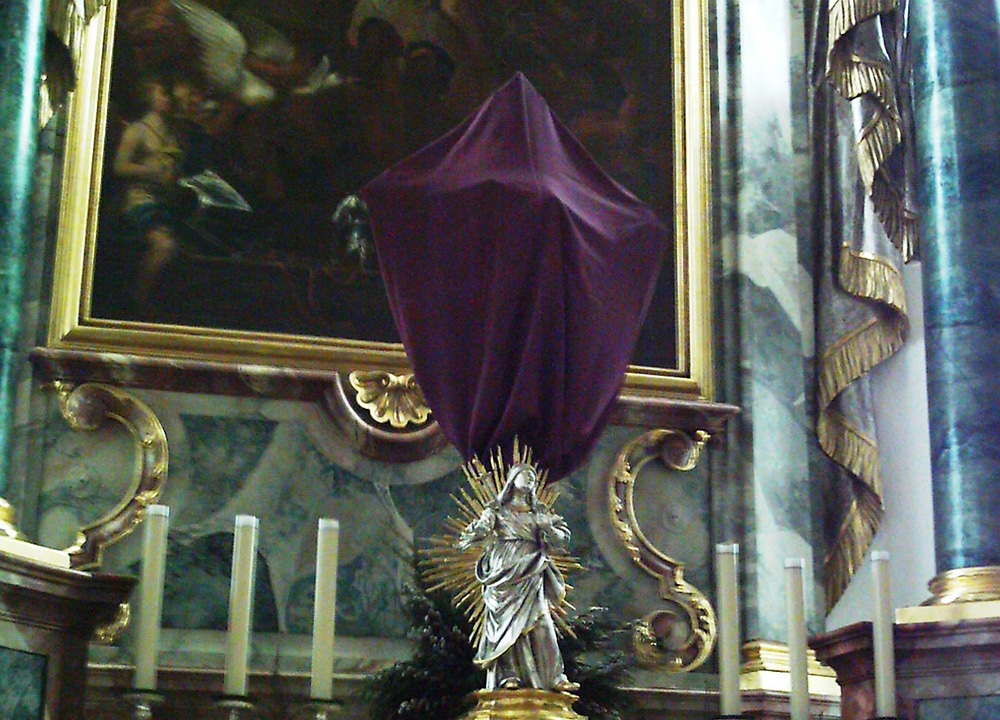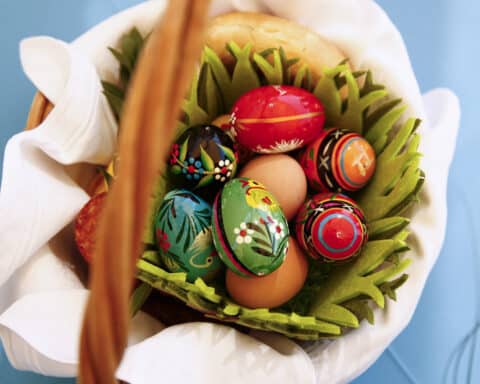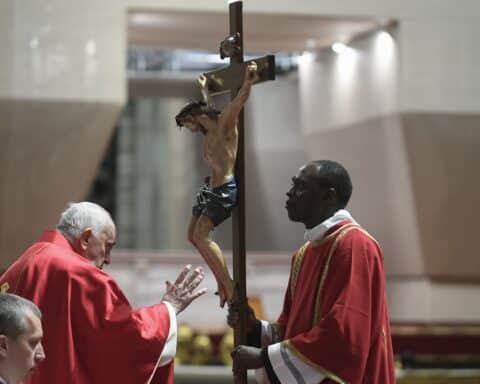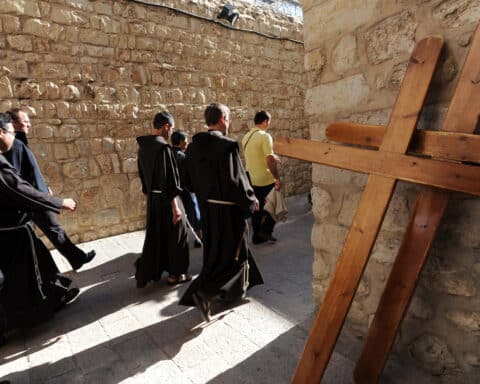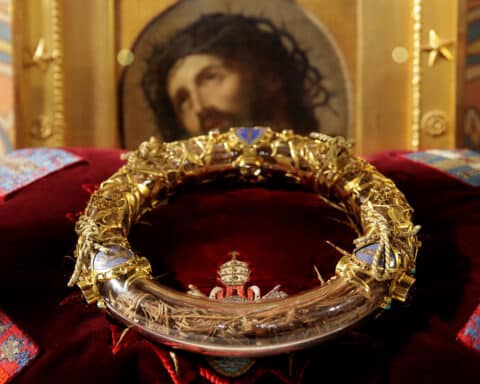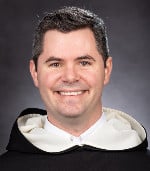
The pastor at my first parish brought back the practice of veiling statues at St. Pius. The old custom had fallen out there, as it had in many parishes. But in 2011, the new English translation of the Roman Missal prescribed: “In the Dioceses of the United States, the practice of covering crosses and images throughout the church from this Sunday may be observed.”
The sanctuary in St. Pius Church is dominated by an immense crucifix. Parish teens would scale the marble reredos and carefully drape the cross in a giant sail of violet fabric. It produced a haunting effect. The graceful statues throughout the church became silent, ghostly sentinels, awaiting the Easter liberation of their shrouds.
Customarily, we veil holy things. We veil tabernacles (a nod to the veil of the holy of holies in the Jerusalem Temple, Ex 26:31-33), and we veil chalices. But the veils also focus us, simplifying our ornate churches, drawing our attention to focus on the readings and prepare our senses to experience Easter.
But on this Sunday, which opens the heightened period of anticipation before the Paschal Triduum known as Passiontide, the veils, it seems to me, are more symbolic of death than anything else.
In one of the most moving gestures of the Catholic funeral Mass, family members cover the caskets of their loved ones with a funeral pall. I think of this special covering when I see the veiled statues.
When Lazarus stumbles forth from the tomb, his hands and feet are still bound by burial cloths. His face is wrapped in linen. Jesus has to instruct onlookers to liberate him from his enshrouding mantle (cf. Jn 11:44).
Contrast the raising of Lazarus to Christ’s resurrection. The burial cloths are found folded, laid at rest inside the tomb (Jn 20:5-7). The small detail insists that Christ was freed. And it’s a sign to us of the tearing off of everything that separates us from God.
Pope Benedict says that on this Sunday the days draw near when we will be spiritually immersed in Jesus’ suffering and death. “It is as if the Church were encouraging us to share Jesus’ state of mind, desiring to prepare us to relive the mystery of his crucifixion, death and resurrection not as foreign spectators but on the contrary as protagonists, involved together with him in his mystery of the Cross and the Resurrection.”
Being in a church with veiled statues is to be surrounded by the mystery of death. The harrowing figures recall that for now, on this side of eternity, a veil hangs between us and those we love.
How we long for the veil to be pulled away! The playwright Eugene O’Neill describes a sailor’s seeing land, representative of just a handful of life’s brief moments of peace, saying: “Like a saint’s vision of beatitude. Like the veil of things as they seem drawn back by an unseen hand. For a second you see — and seeing the secret, are the secret.”
Vision is union. And that’s why the veils are such a powerful reminder. We were not made for the here and now. The here and now is filled with veils and mystery. But we were made for that day when we shall see, not as through a veil, but face to face (cf. 2 Cor 3:18).
Whether you find the veils eerie or nostalgic, they should be one thing above all: soul-stirring. Signs of the solemn days to come, they promise that our Blessed Lord has conquered even the great sorrow of death.
Father Patrick Briscoe, OP, is editor of Our Sunday Visitor. Follow him on Twitter @PatrickMaryOP.

